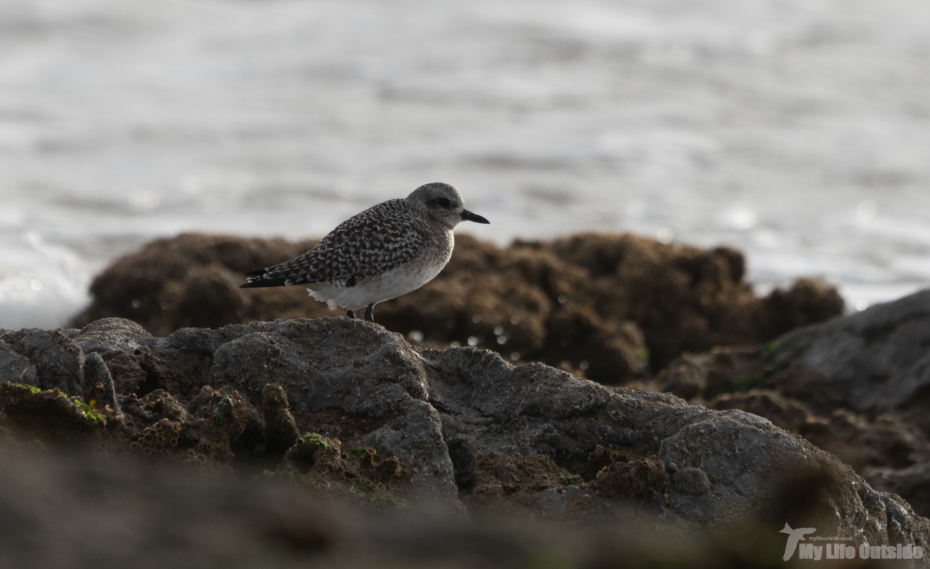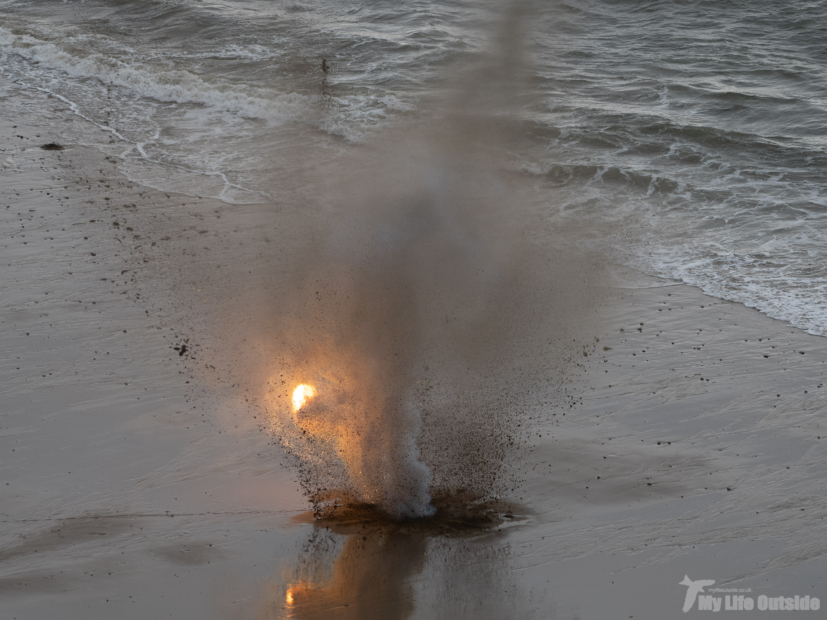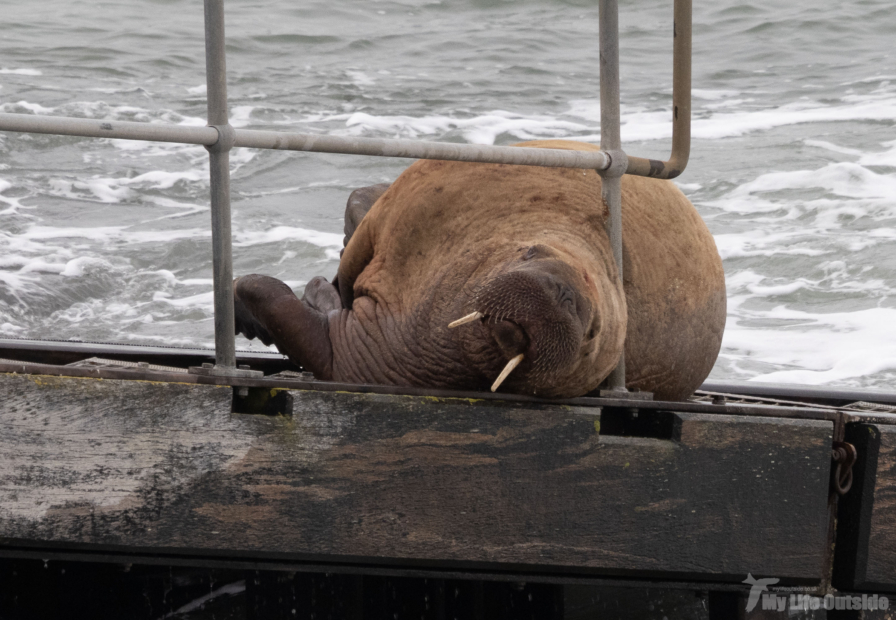South Wales seems to be having a good run of rare birds at present though, with the exception of last weekends trio of Spoonbills, we’ve been unable to see most thanks to work and other commitments. The latest arrival in this mini-influx was reported late on Monday in the shape of a Red-backed Shrike. Now not only is this a rather nice bird but it’s also a species I’ve yet to see so hopes were high that it might stick around. I’m sure you can appreciate therefore the slight pang of disappointment which hit me come Tuesday morning when, thanks to a couple of intrepid early risers, news filtered through that the Shrike looked to have done a bunk. Bum. Nevertheless my mind began to imagine all kinds of possibilities for areas where the bird might have gone that may not necessarily have been searched. Quite why I thought these places unique to my own imagination is beyond me but a sense of blind optimism found us down at Cwm Ivy after work. Conditions were already incredibly dull thanks to the late hour and threatening rain clouds and after a thorough search we had to admit that, perhaps unsurprisingly, the absence of new sightings was not for want of trying.
So were we to leave empty handed? Far from it. Walking the dunes we couldn’t help but marvel at the sheer number of Six-spot Burnet moths and caterpillars literally covering the ground. What at first seemed like a few isolated caterpillars turned into hundreds if not thousands of individuals spanning the entire species life cycle. We had caterpillars feeding, caterpillars spinning cocoons, fully formed cocoons atop blades of grass, emerging moths, moths drying their wings and, to complete the set, mating moths too. To say this was remarkable would be an understatement and it’s certainly something I’ve never been fortunate enough to witness before. Hell, I’ve never even seen this many Burnet moths before!







And that wasn’t all. Cutting across the dunes we were putting up various small moths until a much larger white butterfly briefly popped into view. Tracking it down revealed, to my astonishment, our first of at least eight Marbled Whites. Now I say astonished as this is a species I’ve only ever seen a couple of times previously in England, so to find some virtually on our doorstep was pretty awesome. Just goes to show that there’s always something new to find even in those places that you’ve probably visited hundreds of times.


No Shrike then but some great insect action and also a couple of decent birds. Top billing has to go to a single Tree Pipit calling from the plantation but there were also plenty of Skylark, Whitethroats, Stonechats and even a Great-spotted Woodpecker about. Not bad for a couple of hours before sunset.
That was Tuesday then but it can’t have escaped your notice that it’s now Thursday meaning that tomorrow is officially the end of #30DaysWild. It’s perhaps unfortunate therefore that the weather has taken a turn for the worse this week meaning that, with the exception of Whiteford, our after work jaunts have been a tad restricted. On Wednesday we even came as close to not managing to squeeze our daily dose of wild in as we have all month but I think enjoying drinks on a colleagues eighth floor balcony overlooking Swansea bay just about counts.
Which brings us to today and the long overdue cleaning of various bird skulls collected during the last couple of years. They’ve been soaking for several months now so this was a chance to rinse them off, disinfect and hope that they don’t disintegrate in the process. Fingers are crossed but the results are hardly photogenic right now so I’ll have to leave you in suspense until the job is done. In the meantime please put your collective thoughts towards sunshine for tomorrow as we want #30DaysWild to conclude in style, not with a typically damp British summer’s day.



0 Comments